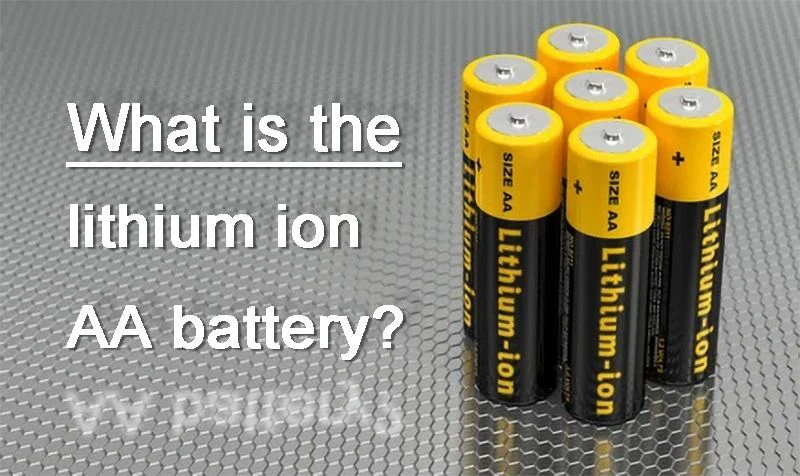
AA lithium batteries, also known as AA lithium-ion batteries or AA Li-ion batteries, are a type of rechargeable battery that is commonly used to power a wide range of electronic devices. They are designed to replace disposable AA batteries, providing a more environmentally friendly and cost-effective solution. AA Lithium Batteries are a popular choice for a variety of applications due to their compact size and high energy density. They are often used in devices where a lightweight and long-lasting power source is required, such as digital cameras, remote controls, and portable electronics. These batteries have a nominal voltage of 1.5 volts and come in different chemistries, such as lithium iron phosphate (LiFePO4) and lithium manganese dioxide (LiMn2O4), each offering distinct advantages like high discharge rates, long cycle life, and excellent performance in extreme temperatures. AA Lithium Batteries are also known for their low self-discharge rate, which means they can be stored for long periods without significant loss of charge. This makes them ideal for emergency or backup power supplies. Moreover, their construction, which includes a protective casing and internal safety features, ensures safe operation and reliability, contributing to their widespread use across many consumer and industrial products.
The size and shape of AA lithium batteries are standardized. They have a cylindrical shape with a diameter of approximately 14.5 mm (0.57 inches) and a length of about 50.5 mm (1.99 inches). This standard size allows AA lithium batteries to be compatible with a wide range of devices that require AA batteries, making them a popular choice for powering various electronic gadgets and appliances.
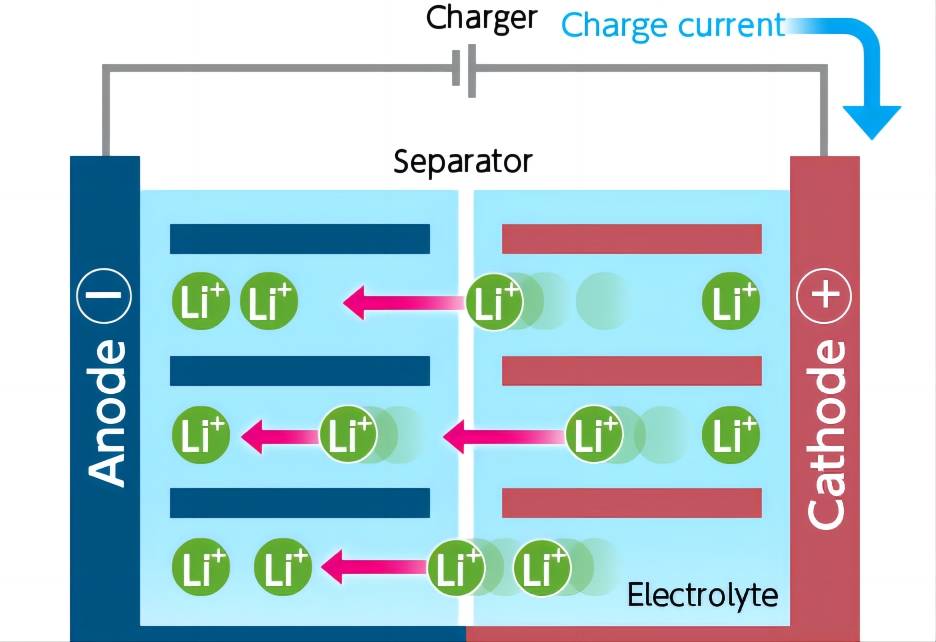
The working principle of lithium-ion batteries involves the movement of lithium ions between the positive and negative electrodes during charging and discharging cycles. When the battery is being charged, lithium ions from the positive electrode (cathode) move towards the negative electrode (anode) through the electrolyte, which is typically a lithium salt dissolved in an organic solvent. At the same time, electrons flow through an external circuit, creating an electric current.
During discharge, the process is reversed. The lithium ions move from the negative electrode back to the positive electrode, releasing stored energy. This energy can power various electronic devices connected to the battery.
The movement of lithium ions is facilitated by the unique structure of the battery. The positive electrode is typically made of a lithium-based compound, such as lithium cobalt oxide (LiCoO2), while the negative electrode is made of a material capable of intercalating lithium ions, such as graphite. The electrolyte acts as a medium for the transport of lithium ions between the electrodes.
The working principle of lithium-ion batteries allows them to be rechargeable. When an external power source is connected, the flow of current is reversed, causing the lithium ions to move back to their original positions. This process restores the battery's energy storage capacity, and the battery can be reused for subsequent charging and discharging cycles.
AA lithium batteries typically have a voltage of around 3.6-3.7 volts. This voltage is slightly higher than the 1.5 volts provided by disposable alkaline batteries. The higher voltage of AA lithium batteries can be advantageous for devices that require more power or have specific voltage requirements.
In terms of capacity, AA lithium batteries are available in various capacities ranging from approximately 1000mAh to 3000mAh or even higher. The capacity of a battery determines how long it can power a device before requiring recharging. Higher-capacity AA lithium batteries can provide extended runtime, making them suitable for devices that demand a longer-lasting power source.
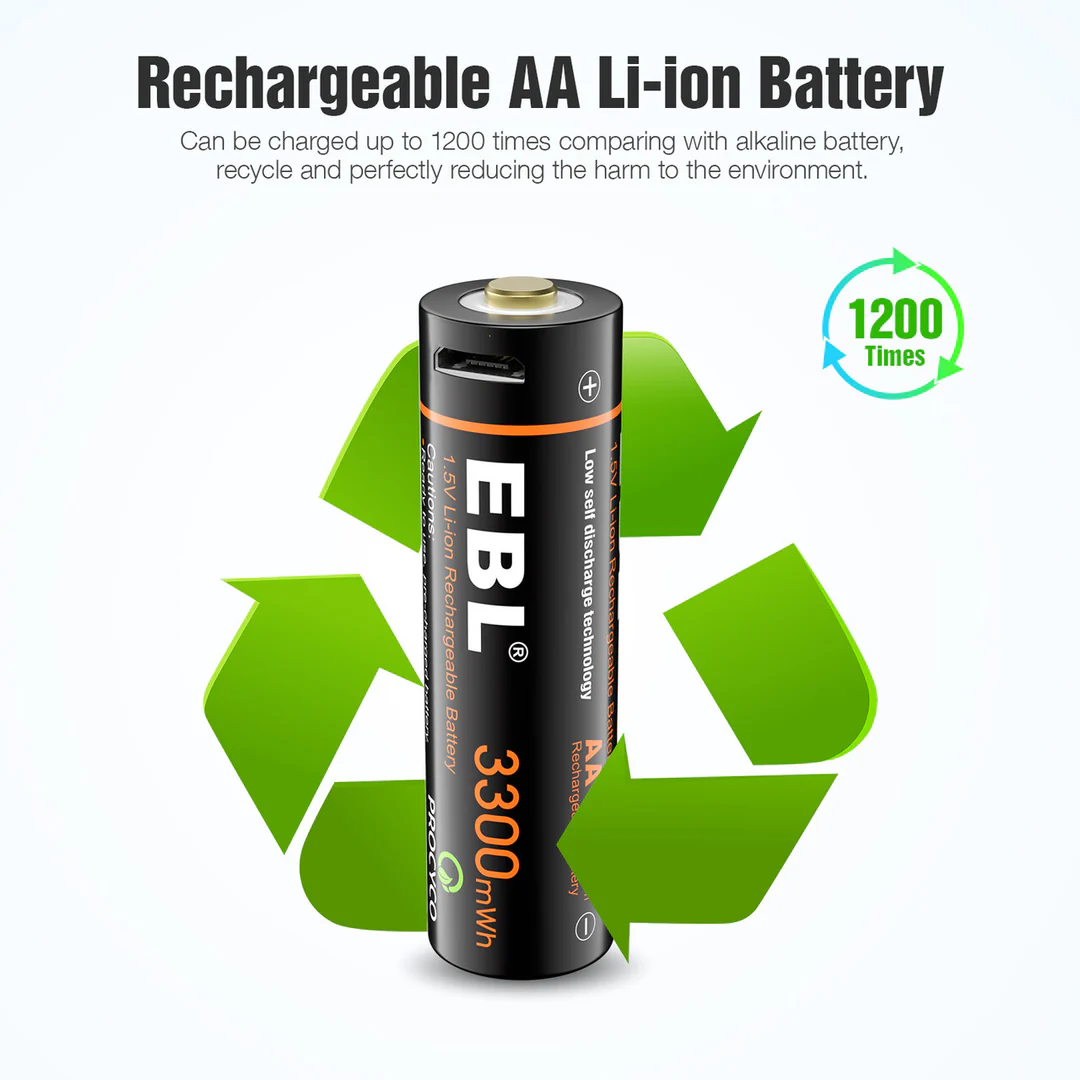
AA lithium batteries are rechargeable, which means they can be reused multiple times by recharging them when their energy is depleted. This feature makes them an environmentally friendly and cost-effective alternative to disposable batteries.
The rechargeability of AA lithium batteries is one of their key advantages. They can be recharged using a compatible battery charger designed for lithium-ion batteries. The charger typically connects to a power source, and the AA lithium batteries are inserted into the charging slots or bays of the charger. The charger then supplies the appropriate charging current and voltage to the batteries, replenishing their energy levels.
The charging time for AA lithium batteries can vary depending on several factors. The battery's capacity is a significant factor, as higher-capacity batteries generally take longer to recharge. Additionally, the charging current and the charging method used can also affect the charging time. Standard charging methods typically take several hours to fully recharge AA lithium batteries.
However, it's important to note that advancements in charging technology have led to the development of faster charging options for lithium-ion batteries. Some chargers offer rapid or fast charging capabilities, which can significantly reduce the charging time. These chargers provide higher charging currents to the batteries, allowing them to recharge more quickly.
It's crucial to follow the manufacturer's recommendations and guidelines for charging AA lithium batteries. Overcharging can damage the batteries and reduce their overall lifespan, while undercharging may result in diminished performance. Using a charger specifically designed for lithium-ion batteries and adhering to the recommended charging time and procedures will help ensure safe and efficient recharging of AA lithium batteries.
Advantages
High energy density: AA lithium batteries offer a higher energy density compared to other types of batteries, such as alkaline batteries. This means they can store more energy in a compact size, making them ideal for power-hungry devices.
Longer lifespan: AA lithium batteries have a longer lifespan compared to disposable batteries. They can withstand hundreds of charge and discharge cycles, providing extended usage before requiring replacement.
Rechargeable: The rechargeability of AA lithium batteries is a significant advantage. They can be reused multiple times, reducing waste and saving money in the long run.
Consistent power output: AA lithium batteries deliver a more stable and consistent voltage output throughout their discharge cycle. This ensures reliable performance and consistent power supply to devices.
Lightweight and compact: AA lithium batteries are lightweight and have a compact form factor. This makes them convenient for use in portable devices, where size and weight are crucial factors.
Disadvantages
Higher cost: AA lithium batteries are generally more expensive upfront compared to disposable batteries. However, their longer lifespan and reusability make them cost-effective in the long term.
Charging time: The charging time for AA lithium batteries can be longer compared to the time it takes to replace disposable batteries. It requires access to a compatible charger and the patience to wait for the batteries to recharge.
Special handling: Lithium-ion batteries require special handling and care to ensure safety. Improper handling or exposure to extreme temperatures can lead to performance issues or even safety hazards.
Capacity decrease over time: Like all rechargeable batteries, AA lithium batteries experience a gradual decrease in capacity over multiple charge and discharge cycles. This means their maximum energy storage capacity may reduce over time.
Considering the advantages of higher energy density, longer lifespan, rechargeability, and consistent power output, AA lithium batteries are a popular choice for a wide range of applications. However, their higher cost, longer charging time, special handling requirements, capacity decrease over time, and limited availability should be taken into account when deciding whether they are the right choice for specific devices and usage scenarios.
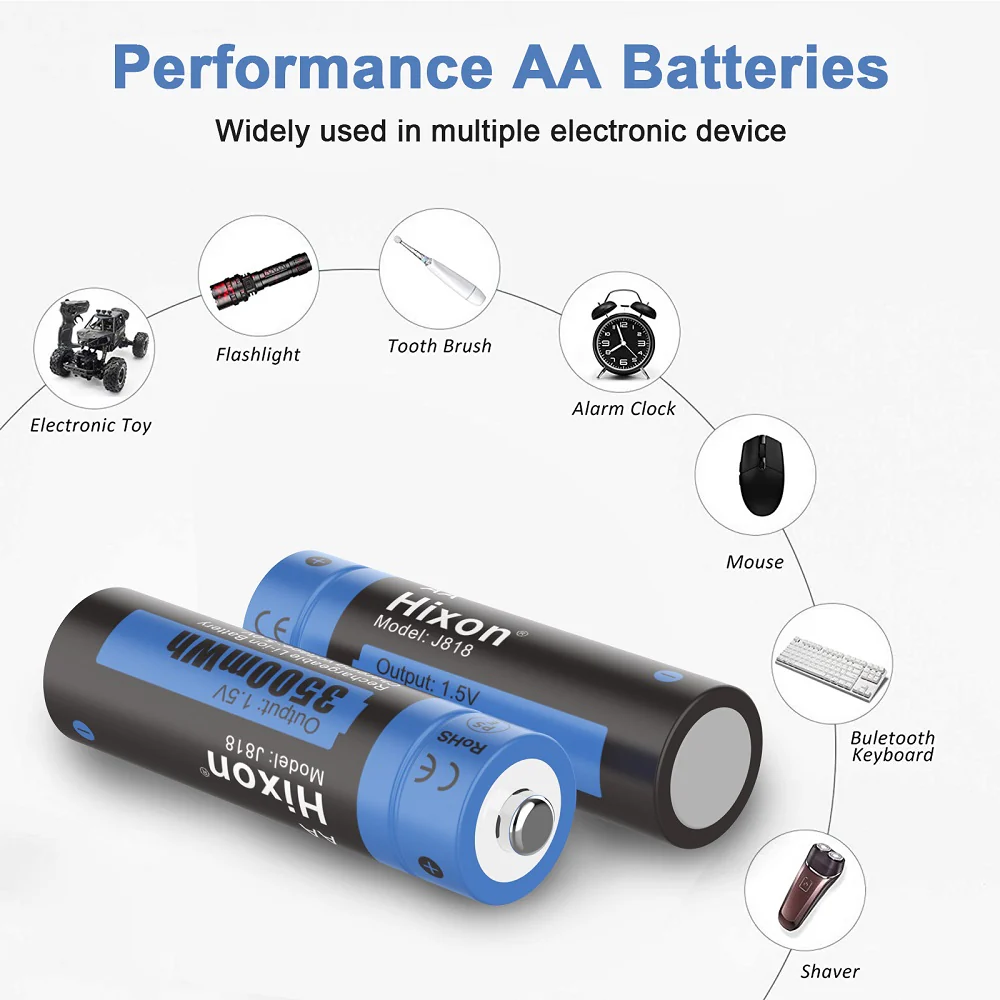
AA lithium batteries are widely used in various everyday devices and applications. They find common application in portable electronics like digital cameras, wireless keyboards, and handheld gaming devices, providing a reliable and long-lasting power source. For instance, a digital camera often relies on AA lithium batteries to capture high-quality photos and videos, ensuring a consistent power supply during extended photography sessions.
In addition, AA lithium batteries are commonly found in household items such as remote controls, allowing uninterrupted operation of televisions, audio systems, and other electronic devices. These batteries are also used in flashlights, providing bright and reliable illumination during emergencies or outdoor activities.
Furthermore, AA lithium batteries are used in wireless computer peripherals like wireless mice and keyboards, offering a convenient and cord-free user experience. These batteries provide a stable power source, ensuring seamless connectivity and operation of these peripherals.
Moreover, AA lithium batteries are utilized in various children's toys, powering remote-controlled cars, robots, and interactive devices. These batteries enable hours of playtime and ensure consistent performance during play sessions.
Overall, AA lithium batteries are versatile power sources, finding application in a wide range of devices, including portable electronics, household items, wireless peripherals, and children's toys. Their high energy density, longer lifespan, and reliable power output make them a preferred choice for powering everyday devices.
The current high cost of lithium AA batteries can be attributed to a variety of factors that influence their production and market dynamics. One significant factor is the rising demand for lithium, a key component in lithium-ion batteries, which is driven by the rapid growth of the electric vehicle and renewable energy storage industries. This increased demand leads to higher prices for lithium raw materials, which in turn raises the cost of lithium batteries. Additionally, the manufacturing process for lithium AA batteries is more complex and requires more sophisticated technology compared to alkaline batteries, adding to the production costs. The supply chain for lithium is also subject to geopolitical and environmental considerations, as lithium mining and processing are concentrated in a few countries, making the supply susceptible to disruptions and regulatory changes. Furthermore, the energy required for extraction and processing of lithium is substantial, which can also contribute to the higher price. Lastly, the market for lithium AA batteries is relatively small compared to other lithium-ion batteries used in larger applications like EVs and mobile devices, which means economies of scale are not as pronounced, leading to higher per-unit costs. Despite these factors, lithium AA batteries offer advantages such as a longer shelf life, better performance in extreme temperatures, and a higher energy density, which can justify their premium pricing for consumers who require these specific benefits.
No, the 18650 lithium battery is not the same as an AA battery. They are different in size, capacity, and typically in chemistry as well. The "18650" refers to a specific type of cylindrical lithium-ion battery, which is 18mm in diameter and 65mm in height. These batteries are commonly used in laptops, power tools, and other high-drain applications due to their high energy density and capacity. They are also popular in the DIY electronics community for custom battery packs. On the other hand, AA batteries are standardized as having a diameter of approximately 14mm and a length of about 50mm. AA batteries are available in various chemistries, including alkaline, nickel-cadmium (NiCd), nickel-metal hydride (NiMH), and lithium. However, when people refer to lithium AA batteries, they usually mean small cylindrical lithium batteries that are designed to fit into devices that typically use AA alkaline batteries. While both the 18650 and AA lithium batteries are lithium-based, the 18650 is a larger, more powerful battery designed for different applications than the AA form factor. The 18650 is not interchangeable with AA batteries in terms of size or physical compatibility with AA battery compartments.
Lithium batteries, while offering numerous advantages such as high energy density and longevity, are not suitable for all applications. There are specific circumstances where their use should be avoided. For instance, in devices that require a very low self-discharge rate over many years, lithium batteries may not be the best choice due to their relatively higher self-discharge compared to certain other chemistries like alkaline. Additionally, in applications where cost is a significant concern and the device has low power requirements, the higher price of lithium batteries may not justify their use, making cheaper alternatives like zinc-carbon or alkaline batteries more appropriate. Furthermore, lithium batteries should not be used in environments where they are prone to physical damage, as they can be susceptible to puncture or short circuit, which may lead to thermal events or even rupture. Also, they should not be used in devices that are not designed to handle the higher voltage of lithium batteries, as this can cause damage to the device's electronics. Lastly, lithium batteries should be avoided in situations where disposal or recycling is problematic, as they require special handling and recycling processes to prevent environmental harm. It is essential to consider these factors and the specific needs of the application when deciding whether to use lithium batteries.
Lithium batteries are not allowed on planes without restrictions due to safety concerns stemming from their chemical makeup and potential for thermal runaway. Lithium, being a highly reactive metal, can pose a significant fire risk, especially when batteries are damaged, defective, or improperly packed. During air travel, the combination of pressure changes, fluctuating temperatures, and the possibility of physical impacts could potentially destabilize lithium batteries, leading to short circuits and in extreme cases, fires. This risk is heightened when batteries are part of large quantities or are improperly installed in devices. To mitigate these risks, aviation authorities have imposed regulations that require lithium batteries to be carried in carry-on luggage only, where they are more easily accessible and less likely to be exposed to the conditions that could trigger a thermal event. Passengers are also advised to ensure that spare batteries are protected from short-circuiting by placing them in original retail packaging, plastic battery cases, or using non-conductive materials to separate them. Furthermore, lithium batteries should be charged to an appropriate level before flying, as both overcharged and deeply discharged batteries are more prone to failure. These precautions are crucial for maintaining the safety and security of all passengers and crew on board the aircraft.
The largest problem with lithium-ion batteries, which is a subject of ongoing research and development, is arguably their safety concerns, particularly the risk of thermal runaway. Thermal runaway occurs when a battery cell undergoes an uncontrolled reaction that leads to rapid heating and potentially a fire or explosion. This can be triggered by various factors, such as manufacturing defects, physical damage to the cell, overcharging, or exposure to high temperatures. The high energy density that makes lithium-ion batteries so attractive for portable electronics and electric vehicles also means that they store a significant amount of energy that can be released violently during a thermal event. Moreover, the use of flammable liquid electrolytes in many lithium-ion batteries can exacerbate these safety issues. While advancements in battery design, materials, and battery management systems are continuously improving safety, the challenge remains to balance the high performance of lithium-ion batteries with ensuring they are robust against the potential for thermal runaway and other safety hazards. This ongoing challenge underscores the need for careful handling, proper use, and advanced safety features in devices that rely on lithium-ion batteries.



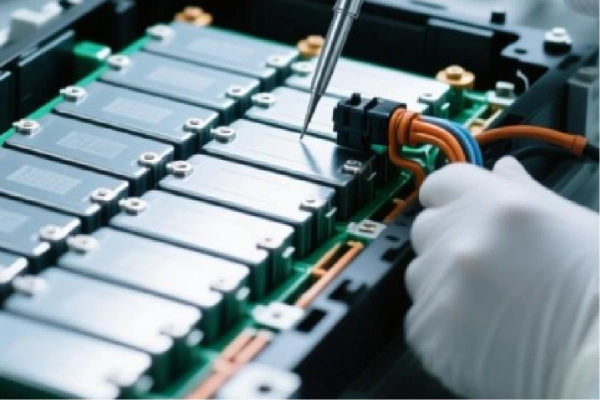
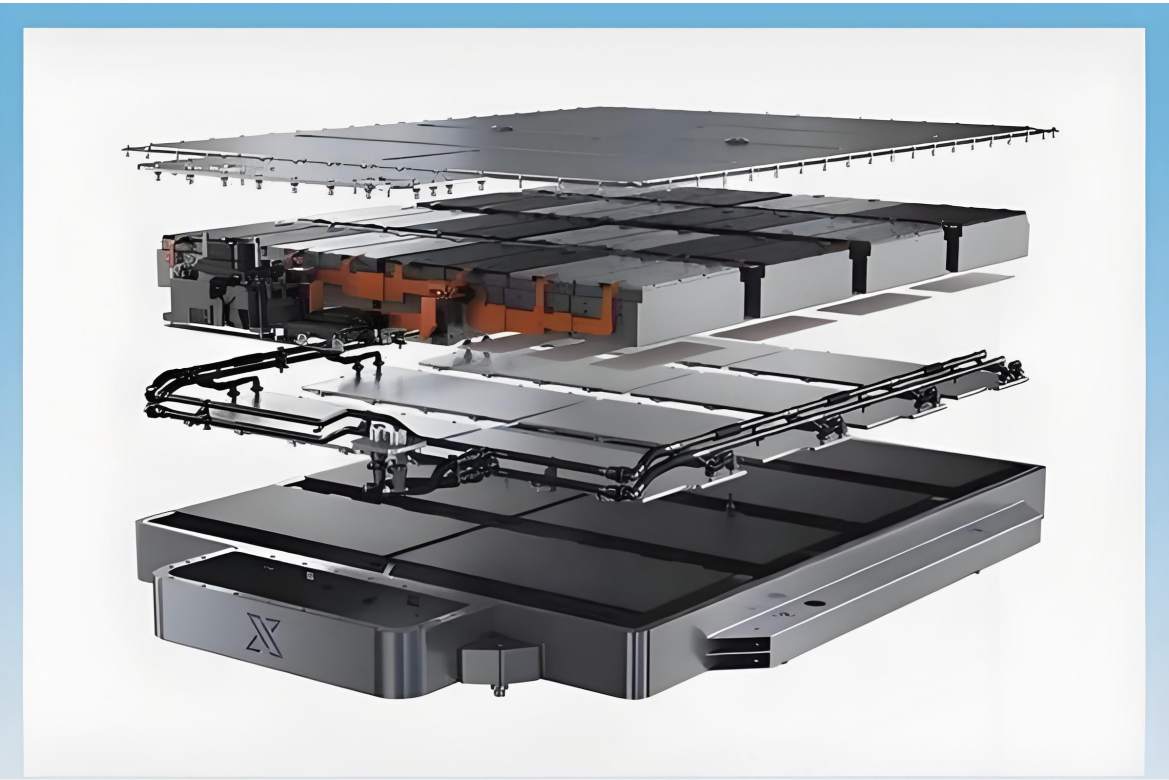


Technology
December 04, 2025

The lab focuses on solid-state battery research to overcome traditional lithium batteries' safety and energy density issues, supporting environmental sustainability. It develops innovative solid-state electrolytes, refines electrode materials, and investigates ion transfer and interface stability to revolutionize battery technology.

The electric vehicle battery industry is rapidly developing, focusing on technological innovation, market competition, and sustainability. Research hotspots include solid-state batteries, new types of electrolytes, BMS optimization, and recycling technologies. The environmental adaptability, safety, and economic viability of batteries are key research areas, and the industry is expected to undergo more innovation and transformation.

We specialize in battery preparation technology research, focusing on overcoming existing energy storage challenges by innovating in electrode materials, battery chemistry, and manufacturing processes to improve performance, enhance safety, and reduce costs. Sustainability and recycling technologies for batteries are also emphasized to mitigate environmental impacts and foster the growth of green energy.